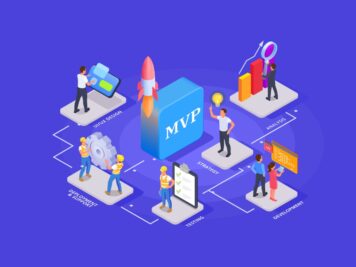Wuhan hits the headline again. But this time, it is not for any virus outbreak. Manus AI (developed by Wuhan-based startup, Butterfly Effect) is making ripples across the AI landscape. Launched in the first week of March, Manus claims that it is better than OpenAI’s AI agent, DeepResearch citing results of GAIA benchmarks. In fact, it has the green light from people like Twitter cofounder Jack Dorsey.
Manus currently runs on Anthropic’s Claude Sonnet model which has disappointed many after initially getting them glued to it. Some have called it a wrapper that leverages the agentic capabilities of a foundation model. Others have lauded its capabilities. They defended it by saying Manus is not just an API addition. It can do deep research, deep thinking, and multi-step tasks, which others failed to do.
The creators of Manus are now experimenting with Claude 3.7 to improve its reasoning and execution capabilities. There are clear indications of the open-source release of some Manus models, which could be beneficial for startups. But before delving deep into how it can impact startup software development, a focus on what it is, how it is different from others, and how it works can help develop strategies.
What Is Manus AI?
AI agents are supposed to act like concierges or celebrities’ personal assistants, managing routine tasks on their behalf. Manus AI claims to have reached a similar level where it can perform these tasks autonomously. Manus is a word derived from the Latin word for hand and is supposed to be the bridge between the mind and actions. It is a general AI agent that generates ideas and delivers results. It can easily perform tasks like finding the best neighbourhood, readying a stock analysis report, and then launching a website.
Manus is a step beyond chatbot-style AI. It can create a system that can make informed decisions by leveraging large language models (LLMs), multi-modal processing, and tool integration without waiting for continuous user prompts. It responds reactively. Without human intervention, it can plan, execute, and refine tasks across multiple domains. The AI technology also learns from its past experiences and can produce results without requiring iterations.
Manus vs. Traditional AI Models
Manus AI combines reinforcement learning, deep learning, multi-modal intelligence system, and strategic reasoning.
Manus is proactive unlike the reactive models of its competitors like OpenAI, Mistral AI, and DeepSeek. It can analyze problems, set goals, and execute tasks in real-time. It can self-learn by forming new connections, updating its knowledge dynamically, and refining its problem-solving strategies like human intuition. Models like GPT-4, Llama 3, and Claude 3 bank on recall-based learning as pre-trained data governs them.
Claude, GPT-4, and Gemini have limited integration across modalities but they are primarily text-based. Manus integrates vision, language, robotics, and coding into a unified system, which makes it ideal for real-world tasks across domains. Its ability to work with human beings in high-stakes environments makes it even better.
Amazon Bedrock, OpenAI API, and others are cloud-based AI and can be expensive. Manus self-optimizes computing resources. It curtails spikes during scale to avoid unnecessary costs.
How Manus AI Works
Manus AI operates like a multi-agent system. It also works asynchronously and allows users to assign tasks and take a break. It orchestrates a suite of specialized sub-agents responsible for planning, knowledge retrieval, code generation, and more. This structure is to break down complex tasks into smaller components only to delegate them to specific sub-agents for proper execution.
Let’s have a closer look.
Executor Agent – This is the go-to front-end agent for direct communication. It orchestrates tasks seamlessly and keeps things moving without needing deep insights into the specifics. Specialized agents handle those specifics.
Planner Agent – It is the strategic mind of Manus. It agent breaks down complex tasks into actionable, manageable sub-tasks and crafts clear execution plans.
Knowledge Agent – This acts like a personal librarian and analyst to retrieve and synthesize crucial information from diverse sources to keep the user informed and effective.
Sandbox Environment – For every user, there is a dedicated, isolated Linux-based sandbox session with robust browser functionality via the browser-use framework, Python interpreter pre-loaded with essential libraries, comprehensive file system access for smooth data handling, and full terminal access to execute commands directly.
Tool Integration—Manus seamlessly connects to versatile tools to enhance user capabilities in web browsing, coding, data analysis, and creative media production.
Manus gets information after fact-checking using online sources. It offers a view of how it works with a structured analysis and interactive dashboards. It can execute code and automate by writing, testing, and deploying scripts. The web automation helps it interact with web applications, filling forms, and scraping data.
Its agents are capable of performing diverse tasks across different fields, including financial analysis, job applicant screening, and apartment searches. Their impact is often better than humans’. What makes them better is their ability to learn from user behaviors, anticipate preferences, and deliver results tailored to individual needs. Manus operates in the cloud, which is why it executes tasks even when users are offline. Once the task is done, it provides updates to the user.
Manus’ functionalities differ little from OpenAI’s DeepResearch. However, the “Manus’s Computer” window allows users to observe what the agent is doing and intervene when necessary.
Manus relies on Anthropic’s Claude 3.5 Sonnet v1 model to process and generate human-like text. This enhances its ability to perform tasks such as content creation, data analysis, and more. It has also announced a partnership with Alibaba’s Qwen AI models to leverage the latter’s open-source AI models. This will help Manus to implement its functionalities on China’s domestic models and computing platforms. It is also compatible with major cloud vendors such as AWS, Google Cloud, Azure, offering seamless connectivity to services.
As for Manus deployment, enterprises preferring full control over their infrastructure can deploy it on-premises or private cloud setups. It containerized architecture (Docker, Kubernetes) ensures easy installation, maintenance, and scaling within corporate environments.
Key Benefits for Startups
For startups, Manus is a boon. It can completely transform how they plan their software product development. There are four aspects where the impact will be huge.
Scalability
Manus uses a modular multi-agent architecture for efficient task distribution and parallel execution. Its cloud-native infrastructure supports horizontal scaling. This means startups can deploy additional agents as demand grows. It can also be integrated with multiple LLMs (GPT-4, Claude, DeepSeek). Intelligent caching and parallel processing optimize API calls through to ensure high performance under heavy workloads. The self-hosting capability allows enterprises to scale on private infrastructure while maintaining data control. Load balancing, failover mechanisms, and distributed processing are a bonus as they enhance reliability and fault tolerance.
Manus provisions isolated Linux-based sandbox environments for each user session to support diverse computing needs. These environments feature virtualized compute resources, preloaded libraries, and resource throttling for fair allocation. Manus’ AI-driven workflow optimization, hybrid cloud support, and edge computing readiness ensure scale without compromising speed or flexibility.
Cost Optimization
Cost is a huge worry for any startup, especially when funding from venture capitalists dries up like in recent times. Manus has three distinct ways to optimize costs- efficient resource allocation, adaptive LLM selection, and intelligent task orchestration. Its multi-agent system ensures that computational resources are distributed dynamically to reduce idle processing time. Its integration with multiple LLMs (GPT-4, Claude, DeepSeek, etc.) allows the selection of the most cost-effective model based on task complexity, balancing performance, latency, and pricing. It takes cost-cutting a notch up with its intelligent API call management that includes caching, rate limiting, and parallel execution. These reduce redundant queries and optimize cloud usage, which, in turn, lowers API-related costs.
Manus scales dynamically using cloud-native architectures (AWS, GCP, Azure) and leverages containerization (Docker, Kubernetes) to manage workloads efficiently. Organizations can control cloud expenses with self-hosted deployment options by running Manus on private infrastructure. Its pay-as-you-go model can optimize resource allocation based on actual usage, preventing unnecessary costs
Data Privacy & Security
Data security matters for both startups and enterprises. A breach in security costs millions and affects trust. In 2024, the global average data breach cost was $4.88 million. It can also drive customers away. Manus has one advantage that startups can explore. Self-hosting Manus provides greater control over sensitive data by ensuring that all processing occurs within a secure, private infrastructure. Unlike cloud-based deployments, where data is transmitted to third-party servers, a self-hosted setup allows organizations to keep proprietary information on-premises or within a controlled cloud environment. This eliminates risks associated with external data leaks, regulatory non-compliance, or unauthorized access. Manus also provides customizable access controls and enterprise-grade encryption to ensure that only authorized users can interact with the system.
Speed & Productivity
Faster time-to-market is one crucial decisive factor for startups. Competition and product runway are the two main driving factors. A delay in product launch can cut down market advantages and lead to a fund crunch.
Manus’ self-hosting enhances performance and cost efficiency by allowing organizations to optimize computational resources based on their needs. Instead of relying on cloud-based processing, which incurs variable costs and potential latency, companies can allocate dedicated hardware to Manus to ensure faster response times and predictable operational expenses. Self-hosted instances also enable custom integration with internal databases, APIs, and security frameworks, ensuring seamless workflow automation without exposing critical systems to external networks.
Manus enhances speed and productivity through its multi-agent architecture and parallel task execution. By distributing workloads across specialized agents, Manus ensures that tasks are handled simultaneously rather than sequentially. This parallel processing significantly reduces execution time for complex workflows. Manus’ adaptive LLM selection also optimizes response times.
Manus improves workflow efficiency with automated sandbox environments that provide instant access to browser capabilities, Python execution, file system operations, and command-line tools. This eliminates the friction of switching between multiple applications and allows users to focus on core tasks without delays.
Real-World Use Cases
Human prompts play a pivotal role in determining the workflow for ChatGPT-4 and Google’s Gemini. Manus is different. It doesn’t wait for instructions. Instead, it initiates tasks on its own by reviewing new information and adjusting its methods. Manus acts like a highly qualified invisible assistant. It can open browser tabs, write emails, code software, fill out forms, and make real-time decisions.
Manus acts like a supervisor that manages complex tasks step by step. It moves beyond being just an assistant and works as an independent decision-maker. For example, if given a zip file of resumes, Manus reads each one, picks out key skills, and compares them with job market trends. It then ranks the candidates and creates an optimized hiring decision, delivering the final results in an Excel sheet.
Manus can also handle broad requests like “find me an apartment in San Francisco.” Instead of just showing listings, it analyzes crime rates, rental trends, and weather conditions. It then creates a personalized list based on the user’s preferences, even those not explicitly stated.
People interested in stocks can review Manus’ analysis of Tesla stocks. It not only created pie charts to help with comprehensive understanding but also did a SWOT analysis, created a dashboard for users, and wrote investment conclusions with key monitoring factors.
Users can use Manus to make travel plans, complete interactive courses, compare insurance policies, analyze store operations, review financial statements, optimize website SEO, create interactive games, edit podcasts, design brand identity, and more.
Conclusion
Caiwei Chen of MIT Technology Review conducted a thorough review of Manus. According to him, Manus is best suited for tasks requiring extensive research. Although time-consuming, its process typically yields better results than OpenAI’s DeepResearch. However, its failure rate is high, an issue the developers at Manus are working to address.
Manus also struggles with frequent crashes and system instability. Users may encounter problems when it processes large chunks of text. However, one aspect is particularly appealing for startups: Manus’s per-task cost is only $2, significantly lower than that of DeepResearch. Its ability to retain knowledge makes it well-suited for customizing AI agents.
Currently, Manus is in stealth mode. But based on the demos, one thing is evident: Manus’s ability to bridge the gap between AI’s theoretical capabilities and real-world applications will benefit startups. It has the potential to become an essential collaborator across industries. Its impact on creativity and productivity will pave the way for further innovation. With experts on board, Manus can reduce time-to-market and heighten competition. Manus will launch open-source models later this year, which is sure to intensify the AI race.








